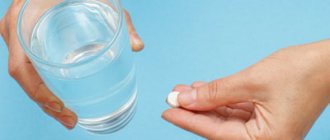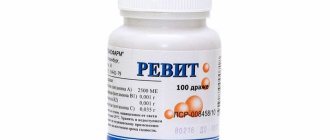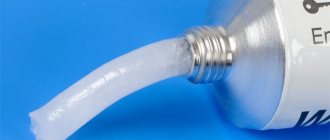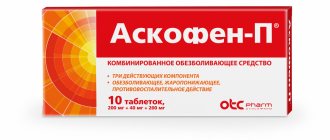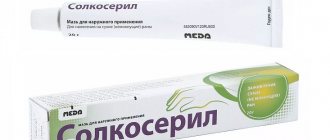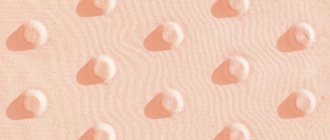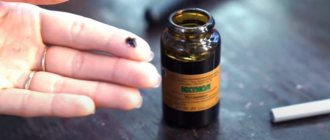Humanity has been using Vaseline for more than a hundred years for a wide variety of purposes. It is easy to use, odorless and colorless. Protect from adverse environmental influences, prevent peeling, soften the skin - all this can be achieved if you use Vaseline. What else can this effective and time-tested remedy be useful for? This will be discussed in this article.
A little history
In the second half of the 19th century, Vaseline was discovered by Robert Chesbrough. Almost immediately it was put into large-scale production. Beginning in the 1870s, it was marketed as an effective treatment for burns, cuts, scrapes, and chapped skin. Women used it in skin care. By the end of the 19th century it was in almost every home. And today such an effective product as Vaseline does not lose its relevance. The price of the product, which is important, is quite acceptable. The cost of Vaseline is between 20-30 rubles per 25 grams.
What is it for?
Vaseline is a common component of skin moisturizers. Its main property is to prevent the evaporation of liquid from the surface of the skin. It softens and accelerates skin healing from cuts and burns, which is why the cosmetic variety of Vaseline is used in appropriate medicinal ointments. In salon cosmetology, it is used before a massage to soften the skin, as well as before a manicure procedure to soften the cuticle. After tattooing, the application area is treated with Vaseline for some time to ensure rapid healing of the skin. It is present in hair styling products, lipsticks and lip glosses. Most likely, your thick cream also contains Vaseline to protect against low temperatures. This is an effective remedy for softening rough skin, healing cracked heels, and eliminating peeling on the skin of the elbows.
Vaseline: composition and properties
The product consists of a mixture of liquid and solid carbohydrates. It is obtained during the processing of petroleum fractions with low boiling points. The melting point of this substance is 60 °C. Vaseline dissolves in chloroform and ether and can be mixed with all types of oils, with the exception of castor. Moreover, this substance is insoluble in either alcohol or water, so after application to the skin the product is difficult to wash off. Natural petroleum jelly is produced from naturally occurring paraffin resins. The composition of the artificial product includes a mixture of paraffin and ceresin with the addition of perfume oil and substances that increase viscosity. Artificial Vaseline has a cloudy white or yellowish color. The natural product, in comparison, is more transparent and has a viscous consistency, and also has an antimicrobial effect.
Brief characteristics of the drug
Vaseline was first obtained back in 1859 during experiments with oil.
The resulting product resembled the popular delicacy in appearance and consistency, and was therefore called oil jelly. But the inventor of the substance, chemist Robert Chesbrough, could not popularize it under this name, and therefore came up with another name for his brainchild, combining parts of the German and Greek words, which translated mean water and oil. This marketing ploy turned out to be more successful, as it quickly attracted public attention. A few years later, the scientist patented a new name, which not only has survived to this day, but has also become a household name. What is Vaseline made from, its physicochemical properties
Today there are two types of substances: natural and synthetic origin. The first is obtained from paraffin resins of deciduous trees after appropriate cleaning, bleaching, deodorizing and dyeing.
The substance does not have a structural formula, since it is a mixture of several components: mineral oil and paraffin hydrocarbons.
Natural Vaseline has an ointment-like, viscous structure that forms viscous threads. When applied in a thin layer to the surface, it is clearly visible. The substance does not smell of anything; when heated, it can emit a faint paraffin odor.
The melting point is from 27 to 60 °C, the liquid formed during heating is transparent, can be colorless or with a yellowish tint.
The substance can dissolve in ethers and chloroform, but not in water or ethanol. Combines well with all vegetable oils, except castor.
Vaseline has pronounced aseptic and hydrophilic properties: it is able to absorb and retain moisture. Emulsifies with great difficulty. During storage, a quality substance should not separate into fractions and release even the smallest particles of oil.
To produce synthetic petroleum jelly, a set of several components is used: ceresin, purified perfume oil and medical petroleum jelly. The ingredients are mixed, melted, and a certain amount of pure petrolatum is added to the resulting mixture to achieve viscosity and prevent oil separation.
The raw material for the artificial substance is waste from the wood processing industry or a special cosmetic substance. The physical characteristics of the synthetic substance are similar in quality to natural petroleum jelly; it is just as viscous, but differs in shorter threads.
The composition of the additives or the degree of purification of the substance depends on what Vaseline is needed for. Most often it is used in cosmetology, food industry, medicine and everyday life.
Varieties of Vaseline
This remedy is divided into three types:
- Technical. This species undergoes the least purification. The color of technical Vaseline can vary from yellow to dark brown. This product has a distinct smell of kerosene. Technical Vaseline is widely used in industry. It protects metal parts from moisture, acts as an impregnation of electrical insulators and is used as a lubricant for various contacts. Technical petroleum jelly contains acids, so if it comes into contact with the skin, irritation may occur.
- Medical. This type of product undergoes careful processing and is white in color. Medical Vaseline is used externally as a protective and emollient, and also as a base for medicinal ointments. The product, applied in a thin layer, will help eliminate small cracks in the skin and make it softer after the negative effects of wind, sun or frost. Vaseline also helps protect the mucous membrane from injury when using an enema or gas outlet tube; for this purpose, hard tips are lubricated with this product before insertion.
- Cosmetic. This species is used in the manufacture of many creams and oils. In its pure form, it is used quite rarely, because it helps to clog pores and blocks the access of oxygen to the skin. However, cosmetic Vaseline is an effective emollient before a massage. It also has a restorative effect. Vaseline is recommended for use after dermabrasion or peeling procedures.
Risks associated with using Vaseline
- Vaseline can trap bacteria in and around open wounds if not cleaned properly. It can also cause infections if the jar is unsanitary. Wash your hands before using Vaseline from a jar.
- People with oily skin may have a higher risk of clogged pores or pimples if they overuse Vaseline (as it is a thick emollient). Use only a small amount of cream if you are prone to acne. Always apply it to freshly washed skin.
- Always buy refined petroleum jelly that is suitable and approved for topical use. Unrefined petroleum jelly often contains harmful impurities.
- Vaseline may cause allergic reactions in people with sensitive skin. Do a short test before applying it to your face or body or
- Consult a dermatologist before use. Vaseline is for external use only. Do not consume it or use it internally.
Some people believe that refined petrolatum contains carcinogens and may increase the risk of cancer. But how true is this?
Vaseline for face
Vaseline is an effective remedy in the fight against premature skin aging and age wrinkles. This effect is achieved due to its ability to create a protective film on the skin surface that prevents tissue dehydration. Also, Vaseline and products based on it are hypoallergenic and safe for the human body. This is true, naturally, if the product is of high quality. In addition, Vaseline does not penetrate the skin, is resistant to destruction, and does not interact with other substances in a cosmetic product.
Vaseline benefit or harm for skin - considerations
Purified forms of Vaseline do not contain dangerous ingredients. Vaseline is one of the most popular commercial forms, and according to the Environmental Working Group (EWG), it helps counteract carcinogens and other dangerous ingredients. Unrefined petroleum jelly contains some potentially dangerous contaminants. A group of carcinogens called polycyclic aromatic hydrocarbons can cause cancer and damage reproductive organs. People who want to use Vaseline must buy it from a pharmacy. Homemade products containing petroleum jelly and products from unknown brands may contain harmful ingredients. Vaseline can also worsen skin conditions. The skin naturally forms a protective film after injury, which helps prevent further damage and infection. Vaseline interferes with the formation of this film. Although Vaseline can be used as a lubricant if there are no better options for this. Vaseline is also difficult to clean or rinse off after compared to water-based lubricants. This increases the chance of developing a bacterial infection. Vaseline can also clog pores. People with acne or sensitive skin should avoid using petroleum jelly on areas such as the face. Store it in a cool, dry place. Vaseline can also irritate the lungs, especially in large quantities. Very rarely, this irritation can cause pneumonia.
Vaseline in cosmetology
This product is able to dissolve and remove even stubborn cosmetics. However, you should use Vaseline to remove makeup carefully, avoiding any particles of the product getting on the mucous membrane of your eyes. After the procedure, Vaseline must be removed from the surface of the skin, as its remnants can cause morning swelling. This product also effectively fights wrinkles. For this purpose, Vaseline is mixed with aloe juice in a ratio of 1:2. The resulting mixture is applied to the face for 20 minutes. Then the remnants of the mask are washed off and the face is rinsed with cool water. If you combine Vaseline with honey or internal fat, you can get a nourishing lip mask.
As can be seen from the above, many problems can be eliminated by using such an effective and affordable remedy as Vaseline.
What is Vaseline for: areas of application
This is a very popular and very affordable product that finds its application in medicine, cosmetology, technology and in the everyday life of modern people. It was invented only in the middle of the 19th century by a native of England, Robert Chesbrough. It was this inventor who discovered a number of useful qualities that Vaseline has: it heals, regenerates and moisturizes human skin.
Vaseline has the following properties:
- Protective . Forms a thin film on the surface of the skin. It is not washed off and thanks to this a protective barrier appears that retains moisture in the skin cells.
- Safe and hypoallergenic . It is not absorbed into the blood, but acts only on the surface of the dermis. Does not cause allergic reactions.
- A universal and inexpensive broad-spectrum product.
Application in cosmetology
- Remedy for wrinkles on the face and body. Retains natural moisture, and therefore promotes skin rejuvenation.
- Protects the skin of your hands and face from wind and cold in winter. Thanks to Vaseline, your skin will remain tender and soft even in adverse weather conditions. You will not get chapped or frostbite on your limbs.
- It is included in almost all cosmetic products - creams, ointments, gels, balms are made mainly from petroleum jelly.
- Used against cracks in the sole and for healing and softening heels.
- Using Vaseline for eyelash and eyebrow growth. This product allows you to strengthen your eyelashes and give them volume and fluffiness, ensuring rapid growth. Can be used as a brow gel to set and shape your brows as desired.
- Hypoallergenic eye and lip makeup remover. Using regular Vaseline, you can easily remove even the most persistent and bright makeup.
- Used as a lip balm in the winter season, as well as in windy weather. Prevents chapping and chapped lips.
- Mask for damaged and weakened hair.
- Cuticle softener.
- Elimination of acne.
- Treatment for tattoos and piercings.
- Can be used as an aftershave balm.
- Baby Vaseline is used as a means to remove dry crusts on a baby's head, eliminate diaper rash and protect the baby's skin from negative environmental factors.
Using Vaseline at home
- Allows you to return the shine and original appearance to your leather bags and wallets.
- Adds shine to your leather shoes.
- Allows you to remove stains from cosmetics that have stained your clothes.
- Used by fishermen to attract fish.
- Furniture polishing.
- Removing rust.
- Cooking (however, this method of use is not recommended, but is actively used by the inhabitants of the Amazon).
- Using Vaseline, you can remove a ring that does not come off and fits tightly to your finger.
- Use in makeup to create theatrical images and painting.
- Protecting the mucous membranes of the nose from dust during cleaning.
Vaseline and the skin around the eyes
Some people think that this area can only be lubricated with special products. But Vaseline is beneficial here too, since the skin around the eyes contains almost no sebaceous glands and is prone to drying out. Vaseline is useful as a preventative against wrinkles during the cold season, especially when the sun reflects off the snow. But you shouldn’t get too carried away with this remedy either. If applied daily for many months, local metabolic disturbances may develop. This usually manifests itself as increased swelling.

